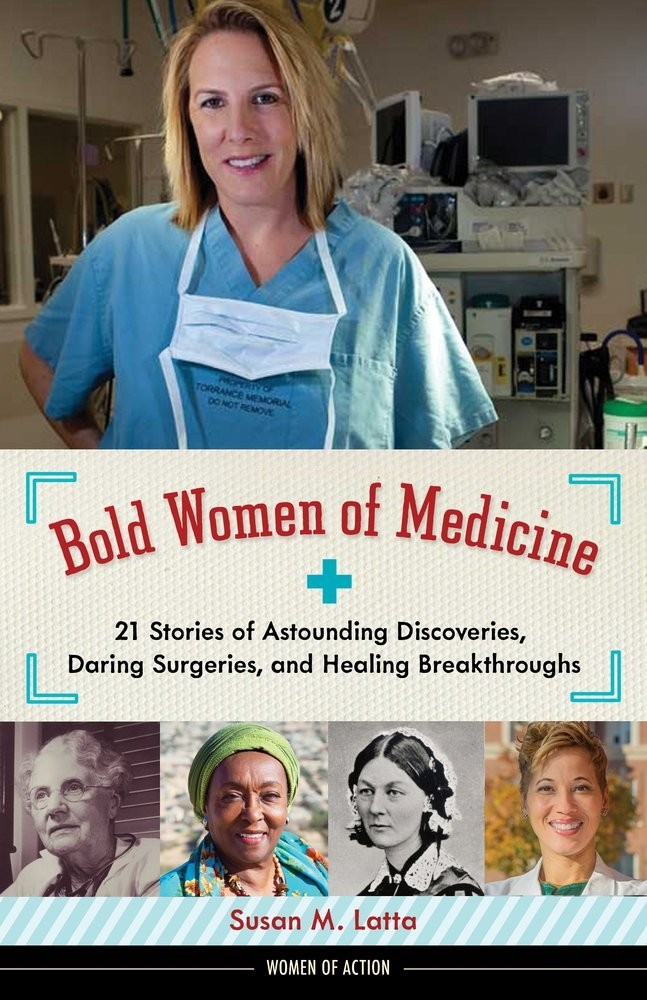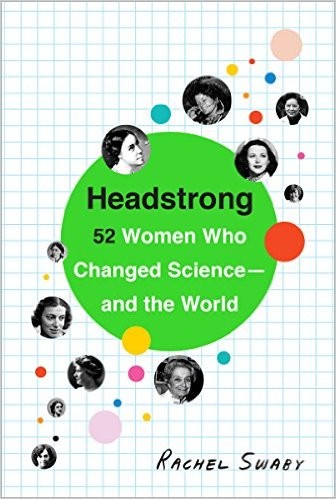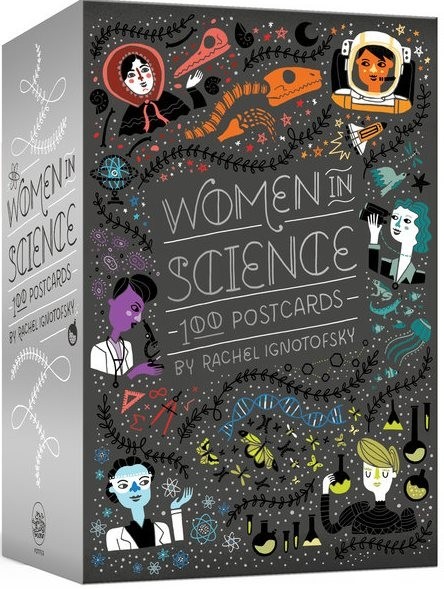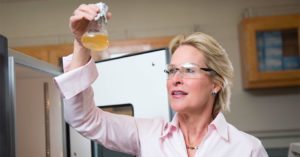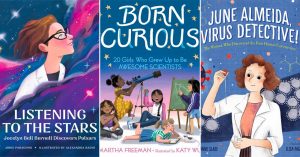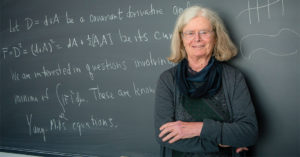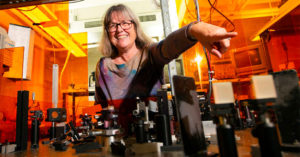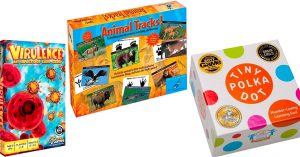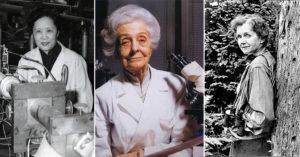Dr. Gerty Cori's groundbreaking work cracked the secrets of glucose, paving the way for treatments for diseases like diabetes.
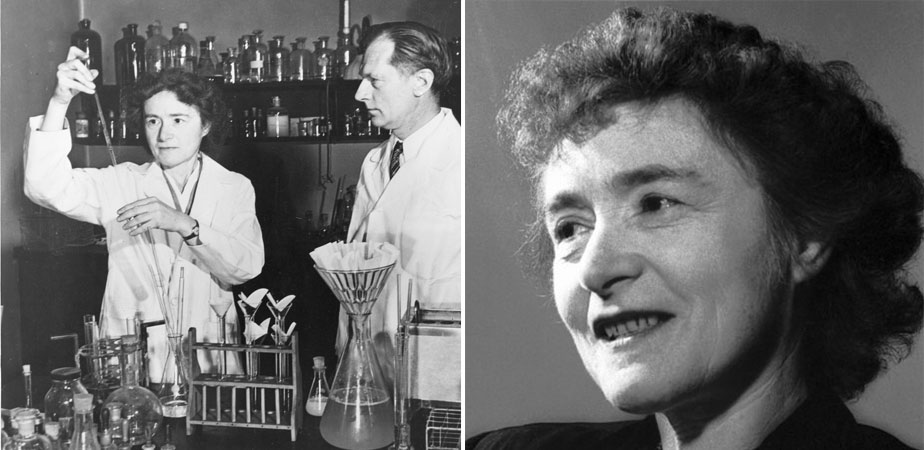 The groundbreaking scientist Dr. Gerty Cori was the first woman to win a Nobel Prize in Medicine and the first American woman to win a Nobel Prize in a scientific field. She shared the Nobel with her husband and lifelong research partner, Carl. Although their experience and education was identical, it took thirteen years before she was finally promoted to the same rank as him at the university where they worked. Together, the Coris made numerous breakthroughs in medical research, including discoveries that paved the way for understanding and developing treatments for diabetes and other metabolic diseases. Despite the institutionalized sexism she faced throughout her career, Gerty's tremendous scientific mind could not be denied — and her work would change the field of biochemistry forever.
The groundbreaking scientist Dr. Gerty Cori was the first woman to win a Nobel Prize in Medicine and the first American woman to win a Nobel Prize in a scientific field. She shared the Nobel with her husband and lifelong research partner, Carl. Although their experience and education was identical, it took thirteen years before she was finally promoted to the same rank as him at the university where they worked. Together, the Coris made numerous breakthroughs in medical research, including discoveries that paved the way for understanding and developing treatments for diabetes and other metabolic diseases. Despite the institutionalized sexism she faced throughout her career, Gerty's tremendous scientific mind could not be denied — and her work would change the field of biochemistry forever.
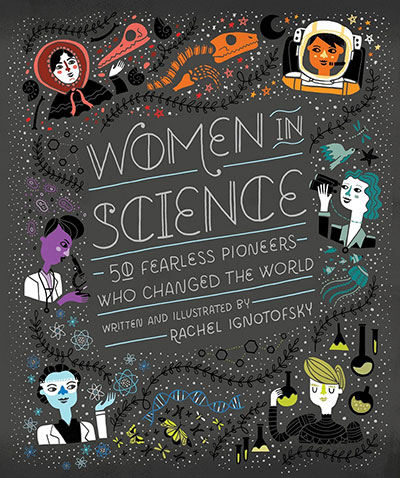 Gerty was born to a Jewish family in Prague on August 15, 1896, and she was eager to pursue a higher education at a time when women had few opportunities to study. Encouraged by a supportive family and hoping to go to medical school but lacking the required prerequisites, Gerty completed the equivalent of eight years of Latin, five years of science, and five years of math in a single year. She met her future husband in medical school and they married soon after graduating in 1920.
Gerty was born to a Jewish family in Prague on August 15, 1896, and she was eager to pursue a higher education at a time when women had few opportunities to study. Encouraged by a supportive family and hoping to go to medical school but lacking the required prerequisites, Gerty completed the equivalent of eight years of Latin, five years of science, and five years of math in a single year. She met her future husband in medical school and they married soon after graduating in 1920.
Due to the difficult conditions in Europe following WWI and, with Gerty's Jewish heritage, the rising anti-Semitism in the region, the couple decided to immigrate to the United States in 1922. Carl was offered a research position at the State Institute for the Study of Malignant Diseases in Buffalo, New York; Gerty was delayed due to the difficulty of finding a position but eventually joined him six months later after she was offered an assistant role. Despite the director's threats to dismiss Gerty if she continued to collaborate on research with her husband, the pair were tremendously productive as a research team. They became naturalized U.S. citizens and published fifty papers together while at the State Institute, with primary authorship going to whomever had done the most research for a given paper.
The pair announced their most famous discovery in 1929: the process that converts glucose, pyruvate, and lactic acid in the body's muscles and liver. In this metabolic cycle, the lactic acid produced by working muscles — which we feel as muscle cramping — is processed by the liver and turned back into glucose from which the body can draw energy. Their explanation of what is now known as the Cori Cycle would win the couple the Nobel Prize for Physiology and Medicine in 1947. When they received the award, Gerty became the first American woman, and third woman ever (after Marie Curie and Irène Joliot-Curie), to receive a Nobel Prize in the sciences.
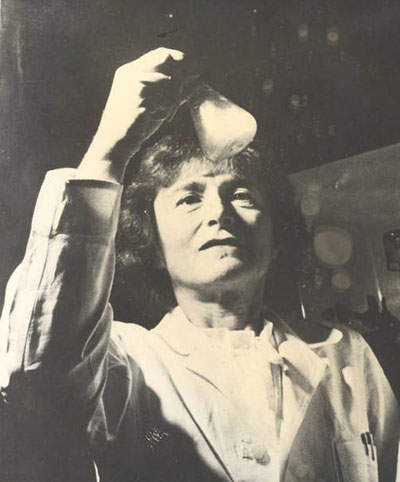 Despite their groundbreaking work, the Institute still discouraged the Coris from collaborating, and the pair decided to search for other opportunities. However, they ran into the same problem over and over: universities would offer a job to Carl, but refuse to make a similar offer to Gerty, with one school even claiming it was "un-American" for a married couple to work together. They finally moved to Washington University in St. Louis, Missouri in 1931 after the university's chancellor waived the institution's nepotism rules so they could work together. However, Gerty was only offered a position as a research associate at a salary one tenth of that received by her husband although their qualifications were identical. It was only after thirteen years that she attained the same rank as her husband. She was finally promoted to full professor just months before she won the Nobel Prize in 1947.
Despite their groundbreaking work, the Institute still discouraged the Coris from collaborating, and the pair decided to search for other opportunities. However, they ran into the same problem over and over: universities would offer a job to Carl, but refuse to make a similar offer to Gerty, with one school even claiming it was "un-American" for a married couple to work together. They finally moved to Washington University in St. Louis, Missouri in 1931 after the university's chancellor waived the institution's nepotism rules so they could work together. However, Gerty was only offered a position as a research associate at a salary one tenth of that received by her husband although their qualifications were identical. It was only after thirteen years that she attained the same rank as her husband. She was finally promoted to full professor just months before she won the Nobel Prize in 1947.
Even given these challenges, the Coris continued their pioneering research while at Washington University. There, the couple discovered the compound that allows glycogen to be broken down into glucose that the body can use; it's now called the Cori ester. On her own, Gerty also studied glycogen storage disease and was the first person to show that an enzyme could cause a human genetic disease. In addition to receiving the Nobel Prize for their work on carbohydrate metabolism, Gerty was also elected as a Fellow of the American Academy of Arts and Sciences and became the fourth woman ever elected to the National Academy of Sciences.
Sadly, just before the Nobel Prize was announced, Gerty was diagnosed with myelosclerosis, a fatal bone marrow disease. For ten years, she fought the disease while continuing her research. She died in her home in 1957 at the age of 61, only a few months after she stopped going in to the lab. However, her spirit of curiosity inspired people for years after her death. "For a research worker the unforgotten moments of his life are those rare ones which come after years of plodding work," she once wrote, "when the veil over nature's secret seems suddenly to lift & when what was dark & chaotic appears in a clear & beautiful light & pattern."
Books About Gerty Cori and Other Groundbreaking Women of Science
Charlotte the Scientist Finds A Cure
Charlotte the Scientist Finds A Cure
Creatures all over the forest are getting sick, and Charlotte the bunny scientist is determined to figure out why! The stumped doctors and scientists are dismissive of her efforts, but she holds firm to her beloved grandfather's assertion that she will "make a real difference in the world." After some patient interviews and a few samples from the outhouse, Charlotte realizes that all the sick animals have been munching on carrots contaminated by 'Funky Forest Fungi.' A quick clinical trial later, and Charlotte has saved the tummies of all her friends! This delightful sequel to Charlotte the Scientist Is Squished celebrates the ability of determined girls to change the world.
Marie Curie (Little People, Big Dreams)
Marie Curie (Little People, Big Dreams)
In this elegant book from the Little People, BIG DREAMS series, kids will learn all about the pioneering life of Marie Curie! Curie wasn't allowed to go to college because she was a woman, but she found a way to pursue her love of science. Her incredible discoveries — including two chemical elements, radium and polonium — were respected around the world. She would become the first woman to win the Nobel Prize for Physics, and the only person to win Nobel Prizes in two scientific disciplines! This inspiring book will make young readers to learn more about how Curie's work has changed the world.
Women in Science
50 Fearless Pioneers Who Changed the World
Women in Science
50 Fearless Pioneers Who Changed the World
This charmingly illustrated and educational book highlights the contributions of fifty notable women to the fields of science, technology, engineering, and mathematics from the ancient to the modern world. Full of striking, singular art, this fascinating collection profiles well-known figures, including chemist Gerty Cori and primatologist Jane Goodall, as well as lesser-known pioneers such as Katherine Johnson, the African-American physicist and mathematician who calculated the trajectory of the 1969 Apollo 11 mission to the moon. Women in Science celebrates the achievements of the intrepid women who have paved the way for the next generation of female engineers, biologists, mathematicians, doctors, astronauts, physicists, and more!
Marie Curie For Kids
Her Life and Scientific Discoveries, with 21 Activities and Experiments
Marie Curie For Kids
Her Life and Scientific Discoveries, with 21 Activities and Experiments
Over decades of groundbreaking scientific work, Marie Curie created the field of atomic physics and coined the term "radioactivity" — but to do so, she had to overcome many challenges, including prejudice against women in science. In this book, kid can learn about Curie's life while doing hands-on experiments and activities of their own! While reading about Curie's work — including her title as the only person ever to win Nobel Prizes in two different scientific disciplines — kids will also make a model of the element carbon, examine World War I X-rays, and even try their own Polish pierogies. It's an excellent way to step into the shoes of this remarkable and trailblazing scientist.
Radioactive!
How Irène Curie and Lise Meitner Revolutionized Science and Changed the World
Radioactive!
How Irène Curie and Lise Meitner Revolutionized Science and Changed the World
In 1934, Irène Curie developed artificial radioactivity with her husband, a discovery that won the couple the Nobel Prize — but Curie was not permitted entry into the French Academy of Sciences, who thereafter banned all women. Four years later, Lise Meitner used Curie's research to help her understand nuclear fission, a discovery that was critical to the nuclear age, but she too was unrecognized by the Nobel Committee, while her colleague was given full credit for their joint research. In this narrative non-fiction book, Winifred Conkling highlights the struggles these groundbreaking women faced in the male-dominated world of research, shedding new light on these remarkable figures from scientific history.
Bold Women of Medicine
21 Stories of Astounding Discoveries, Daring Surgeries, and Healing Breakthroughs
Bold Women of Medicine
21 Stories of Astounding Discoveries, Daring Surgeries, and Healing Breakthroughs
From 19th century battlefield nurses Clara Barton and Florence Nightingale, to modern medical miracle workers like Dr. Catherine Hamlin and Dr. Bonnie Simpson Mason, women have long played a key role in medicine — but their contributions have often been downplayed or forgotten. In this fascinating new title from the Women of Action series, readers get to meet some of the daring and trailblazing women of the past two hundred years of medicine. These women defied prejudices and expectations, created incredible new procedures, and devoted their lives to healing people around the world.
Headstrong: 52 Women Who Changed Science – And The World
Headstrong: 52 Women Who Changed Science – And The World
Learn the often neglected stories of women in science with these 52 engaging capsule biographies! Spanning centuries of courageous thinkers, author Rachel Swaby celebrates women whose specializations range from biology to physics to engineering to programming, from famous names like Sally Ride and Ada Lovelace to lesser-known women like Stephanie Kwolek and Chien-Shiung Wu. While each individual's biography runs for only a few pages, Swaby has done an impressive job of conveying the essence of each scientist's life and work into the profiles, while her light tone urges readers to learn more about each of these groundbreaking women.
The Madame Curie Complex: The Hidden History of Women in Science
The Madame Curie Complex: The Hidden History of Women in Science
Why do men still dominate science and techology? The answer is more complicated that you might think. In this book, Julie Des Jardins explores the stories of groundbreaking women in the sciences, including Jane Goodall, Rosalind Franklin, Rosalyn Yalow, Barbara McClintock, Rachel Carson, and the women of the Manhattan Project, to show both how their work was hindered and how their different perspectives on the world allowed them to make innovative discoveries. It's a testament to the power of having different minds at the table!
Women in Science: 100 Postcards
Women in Science: 100 Postcards
Celebrate the trailblazers of Rachel Ignotofsky's best-selling book Women in Science: 50 Fearless Pioneers Who Changed the World with these beautiful and inspiring postcards! 2 copies each of 50 different illustrations from the book, featuring well-known figures like Marie Curie and unsung heroes like Gerty Cori, Rita Levi-Montalcini, and Jocelyn Bell Burnell, are perfect for sending to friends, displaying as mini art, and more.
Periodic Table Building Blocks
Periodic Table Building Blocks
Elements are the building blocks of the universe — and now they can be the building blocks of your toy box with this fun set from Uncle Goose! 20 solid wood building blocks, made in the US from sustainable Michigan basswood, feature the elements of the periodic table painted in non-toxic, child-safe inks. And even though they're building blocks, don't think they're just for babies — chemistry geeks will love these colorful blocks as much at 36 years as 36 months! For two more of Uncle Goose's science-themed block sets, check out the Dinosaur Blocks and the Fossil Blocks.
Science Ninjas: Valence Card Game
Science Ninjas: Valence Card Game
Turn chemistry into a game with this fascinating game that lets kids tinker with chemicals without setting foot in a lab! Weave together elements to create molecules and cause different reactions. The more you create, the more points you win, but be careful! Some combinations can have unexpected -- and dramatic -- results. Best of all, everything that happens in the game is something that happens in real-life science. Fans of this game can also check out Science Ninjas: Valence Plus, an expanded edition that adds 30 more cards with all-new artwork for even more elements and molecules.














